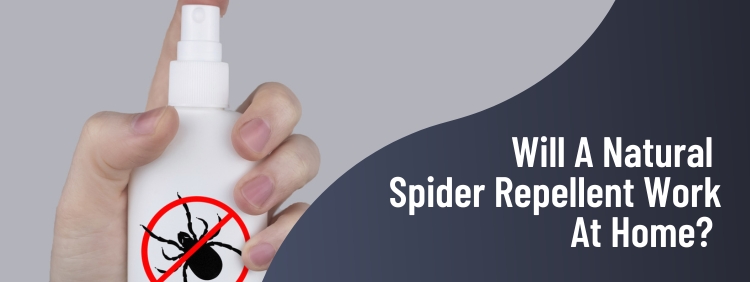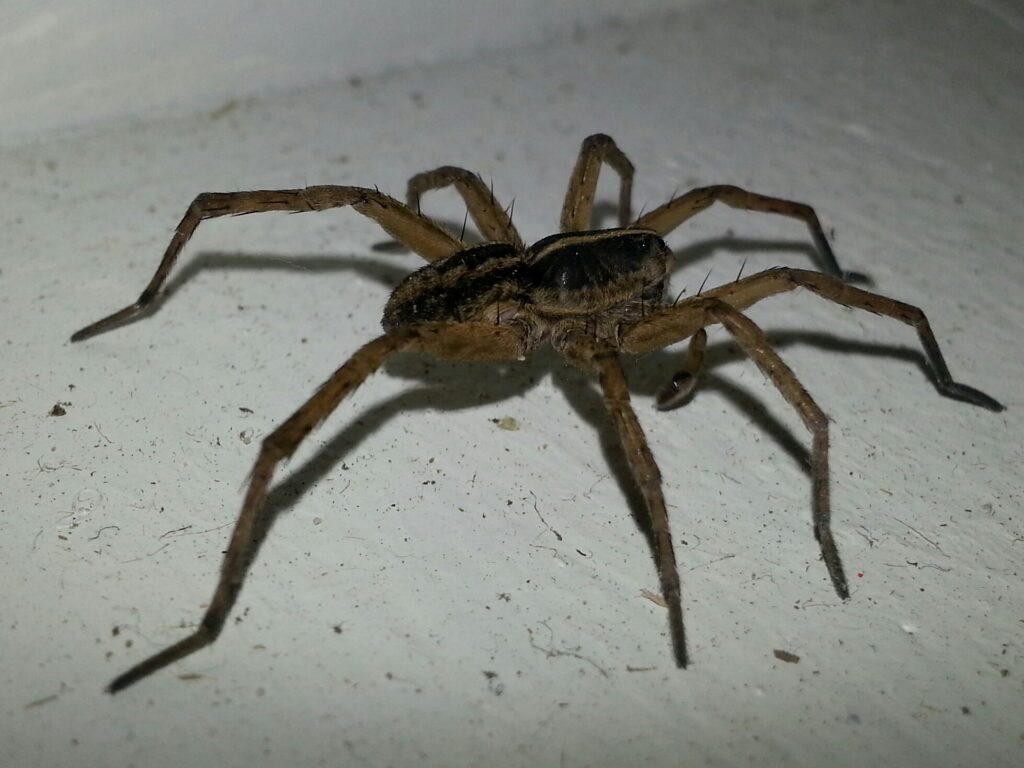 Spiders have long been the uninvited guests in many Toronto homes, weaving their webs in corners and creeping silently across walls. While most house spiders in Canada pose no significant threat to humans, their presence can be both unnerving and unwelcome.
Homeowners are increasingly searching for a natural spider solution, hoping to find a peaceful coexistence solution that keeps their living spaces spider-free without resorting to harsh chemicals. Among the myriad of possible solutions, natural repellents stand out as a promising option for those who prefer an eco-friendly approach.
Enter Truly Nolen, a leader of pest control services in Toronto. With a wealth of knowledge and years of experience, we stand as a beacon of hope for homeowners battling the eight-legged invaders. This post dives deep into the efficacy of natural spider repellents and whether they stand a chance against the determined trespassers in your home.
We’ll explore what makes a repellent effective and how you can implement these strategies to maintain a spider-free environment. With our expertise lighting our way, we aim to answer the burning question once and for all: Will a natural spider repellent work in your home?
Spiders have long been the uninvited guests in many Toronto homes, weaving their webs in corners and creeping silently across walls. While most house spiders in Canada pose no significant threat to humans, their presence can be both unnerving and unwelcome.
Homeowners are increasingly searching for a natural spider solution, hoping to find a peaceful coexistence solution that keeps their living spaces spider-free without resorting to harsh chemicals. Among the myriad of possible solutions, natural repellents stand out as a promising option for those who prefer an eco-friendly approach.
Enter Truly Nolen, a leader of pest control services in Toronto. With a wealth of knowledge and years of experience, we stand as a beacon of hope for homeowners battling the eight-legged invaders. This post dives deep into the efficacy of natural spider repellents and whether they stand a chance against the determined trespassers in your home.
We’ll explore what makes a repellent effective and how you can implement these strategies to maintain a spider-free environment. With our expertise lighting our way, we aim to answer the burning question once and for all: Will a natural spider repellent work in your home?
Understanding House Spiders
Before we can effectively address the issue of repelling spiders naturally, it's crucial to understand who our uninvited guests really are. Many varieties of spiders can find their way into our homes, each with unique habits and reasons for venturing inside. By recognizing these spiders and understanding their behaviours, we're better equipped to deter them. Here's a brief overview of some common types of house spiders and their typical habits:- American House Spider (Parasteatoda tepidariorum): Often found in cluttered areas of the home, the American house spider prefers quiet, undisturbed places. They primarily feed on insects and thrive in environments where they can spin their tangled webs in peace.
- Jumping Spider (Salticidae): Known for their excellent jumping ability, these spiders are often seen during the day hunting their prey. Unlike other spiders, they rely less on their webs for catching food and more on their agility and visual hunting skills.
- Cellar Spider (Pholcidae): Commonly found in dark, damp areas of the house like basements or cellars. These spiders are known for their long, thin legs and propensity to hang upside down in their webs. They are also known for preying on other spiders, including venomous species.
- Wolf Spider (Lycosidae): Unlike many common house spiders, wolf spiders do not spin webs. Instead, they are ground dwellers that hunt their prey, which makes them more commonly found on lower levels of homes, often near doorways or other entry points.
Risks and Considerations of DIY Methods for Managing Spiders
The appeal of adopting more sustainable and less invasive methods to keep spiders and other arachnids at bay from our living spaces is both understandable and commendable. In an era where environmental consciousness is more significant than ever, the drive towards DIY solutions that promise a gentler impact on our planet resonates with many of us. However, as we venture down the path of homemade repellents and eco-friendly deterrents, it's crucial to tread with caution and be thoroughly informed. This exploration isn't just about understanding how these methods work; it's also about recognizing their limitations and the potential risks they may pose. DIY approaches often revolve around the use of natural substances or physical barriers to prevent arachnid entry. From essential oils touted for their repelling properties to strategic placement of plants that are believed to deter spiders, these methods appeal to our desire for harmony with nature. Yet, while such strategies might offer a sense of proactive engagement in pest control, they might not always deliver the effectiveness we seek. The efficacy of natural repellents can vary widely, and without the potency required to deter pests over the long term, we might find ourselves facing recurring issues. Furthermore, the safety of homemade concoctions shouldn't be assumed. Natural doesn't always mean safe—for humans, pets, or the environment. Misguided mixtures or improper use of even the most benign-sounding ingredients can lead to unintended consequences, ranging from skin irritations to more severe health risks. The allure of a 'chemical-free' solution can sometimes overshadow the need for due diligence in understanding what we're introducing into our homes. Another consideration is the impact on the ecosystem within and around our homes. Spiders, despite their often unwanted presence, play a vital role in controlling insect populations. A blanket deterrence strategy could disrupt this natural balance, leading to unforeseen complications with other pests. Therefore, the decision to implement DIY pest deterrence methods requires a balanced and informed approach. It involves weighing the benefits of using environmentally friendly and less invasive tactics against the potential for limited effectiveness and unintended side effects. This doesn't mean shunning all DIY methods but rather selecting and applying them with knowledge and caution. Integrating professional advice and services can complement our efforts towards sustainability in managing pests in our homes. Our experts at Truly Nolen can offer insights into safe, effective, and environmentally responsible strategies that align with our goals. By combining informed DIY practices with professional expertise, we can achieve a balanced and effective approach to deterring arachnids and other pests, ensuring our homes remain safe and comfortable sanctuaries without compromising our environmental values.A Closer Look at Integrated Pest Management (IPM) with Truly Nolen: Your Solution to Spider Infestations
At Truly Nolen, we understand that the presence of spiders in your home or business can be more than just an unwelcome nuisance; it can be a sign of underlying pest issues. That’s why we advocate for an Integrated Pest Management (IPM) approach—a smarter, more sustainable solution to pest control that goes beyond temporary fixes to address the root causes of infestations, including those by spiders.What is Integrated Pest Management (IPM)?
Integrated Pest Management (IPM) is a holistic strategy that combines a variety of methods and practices to manage pests effectively, economically, and with minimal harm to people, property, and the environment. At its core, IPM is about understanding the ecosystem and using this knowledge to choose the most appropriate and sustainable pest control techniques.How Truly Nolen Implements IPM to Combat Spider Infestations
- Inspection and Identification
- Prevention
- Physical and Mechanical Controls
- Responsible Chemical Use
- Monitoring and Follow-Up

